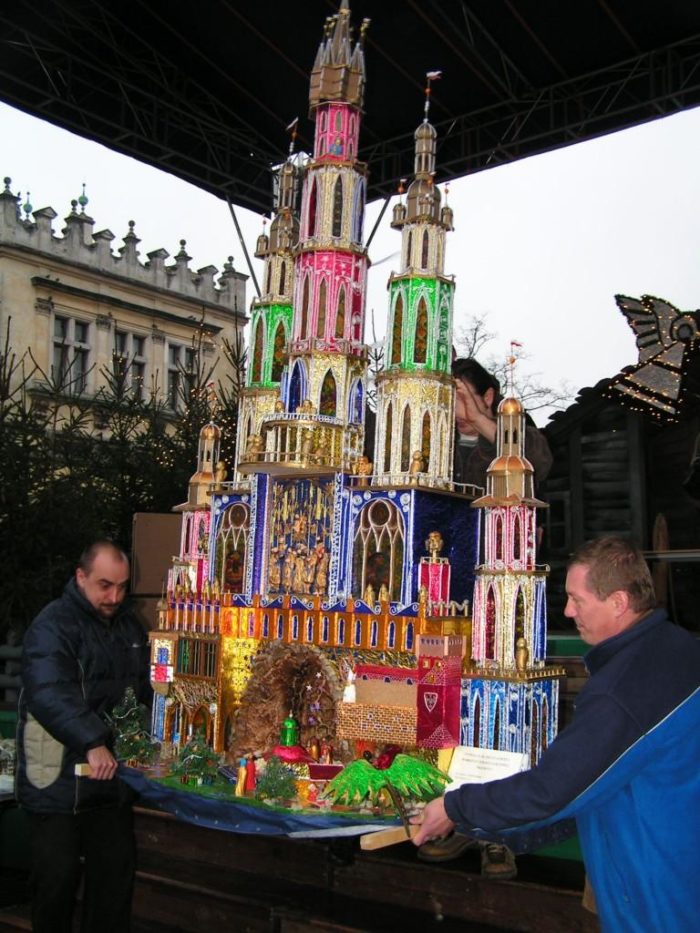Okay, calling them baroque is a bit of poetic licence. And writing about Kraków is a bit of a cop-out. But bear with me, this is actually something special.
Nativity scenes are such a common element of Christmas celebrations nowadays that it’s hard to imagine there was ever a time when they were a revolutionary attempt at creative proselytising. And yet that’s how they began, when Saint Francis wanted his flock to concentrate on the humble origins of their prophet. Representation of the barn in which Jesus is said to be born, together with the family, the animals and visitors, quickly spread to other christian communities.

It’s hard to say whether Saint Francis would have been pleased with the characteristic nativity scenes of Kraków. Even though they are called szopka, which is a diminutive of “shed,” today they have taken on a form of, frankly, byzantine opulence. In their defense, they are not meant to represent the actual Bethlehem barn – rather, they are miniatures of famous buildings of Kraków (or inspired by them) that contain, among other interesting displays, the nativity scene. Often they contain historical, legendary, or allegorical figures, mechanised displays or all of the above, meshed in a living triumph of folk art. Because the crèches of Poland, far from being a static religious illustration, often served as a mobile mini-theatre, where the religious scene was the centerpiece of a larger, often artistic or political, theatrical display.
The Kraków szopka can be seen there, right before Christmas. Every year, on the first Thursday of December, the Market Square of Kraków hosts a contest for the best szopka, where numerous participants vie for the prize, which is having their handiwork displayed in a Museum. The contest was first held in 1937, but the specific Kraków Szopka tradition can be traced to 19th century, when crèches made by craftsmen of Kraków were found to differ significantly from those made elsewhere. Inspired by Kraków architecture, sculptors and craftsmen made models with slim, long towers and renaissance facades. When the contest was first held, it was actually because the tradition had already been dwindling, and a dedicated enthusiast wanted to keep it going. The first contest was aimed at professional artists, but today many of the participants are very skilled and dedicated amateurs who make the scenes in their free time.
 LET'S DESIGN YOUR TOUR!
LET'S DESIGN YOUR TOUR!